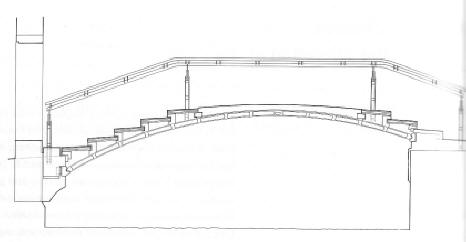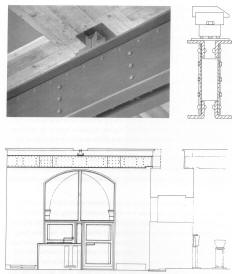
Carlo Scarpa
And the Adoration of the Joint
The chapter starts off with a Passage from Gianni Vattimo. The Passage Basically states that edification must be ethical, entailing communication of value choices. Edification is then a basis for fostering emotions, of ethical being, which can serve as a underlying theme for architecture. this is determined by the parts, not by the whole.
Scarpa placed an emphasis on the joint, and he also placed an emphasis for his particular use of montage as a strategy for integrating heterogeneous elements. In this way the joint is treated as a kind of tectonic condensation which brings the whole into the part. Carlo Scarpa really used the joint as a generator rather than the plan. The joint also serves as a form of measure. it is a breaking point where an object ends. This can be thought of as the way that matter is produced. Matter manifests from measure. The joint also creates an artificial order through geometry. Some themes that come to mind when thinking about Scarpa's work are boundary, datum, measure and ornament. Scarpa isn't concerned whether this joint is an articulation or a linking element such as a stair of bridge. A great example of this is his use of the bridge at Fondazione Querini Stampalia in Venice. Access to the Undercroft ( Vaulted Basement ) is granted by a lightweight bridge that acts as a fixed hinge between the terra firma of the campo and the shell of the palazzo.

In contrast to the lightweight arch, scarpo renders the earthwork as a monolithic concrete tray. In a sense this acts as a horizontal datum for the progression onto the site. Scarpa raises the datum in general as he did in the garden to to allow the space to gain its remoteness and sense of being apart. The ground floor for Scarpa was never a serviceable covering laid over an abstract plane, but an elevated artificial datum to be read as a tactile palimpset. this represents and contains seasonal flooding that the city encounters. The palazzo has two main entries. The first is the delicate everyday passage from the bridge, while the second passage is from the waterfront. This is meant to symbolize the obscelesent nature of the passage. In this Building, Scarpa's use of revetment is evident. This is the use o f any facing metal, stone or wood over a less durable or less attractive material. The travertine and wood are used metonymically. the wood appears in the handrails of the bridge and as the travertine appearing as a kind of wood. It is laid as if it were a sort of petrified cabinetry. Brass accents are the key transpositions between the metonymic materials.

Scarpa believed in truth through making. this meant that the first goal is to delineate the thing that is to be constructed. this creates an identity of the process of perception and production. He did this by his use of cartoni. There wasn't necessarily a break between drafting and making. Another theme of scarpa's is evident with this type of work progress. This was that functionality and ornament were expressed together in a way that no one could tell where one ended and the other began. This is a theme that is expressed by his ability to postpone the final moment of support rather that simply juxtapose the support and load. In the Museo di Castelvecchio, wherever floor beams would intersect he would carry them with built up riveted steel beams at their midpoints. He also placed a cylindrical hinge joint to allow for differential movement at the absence of the column. This was a necessary functional aspect that was ornamented through design.
